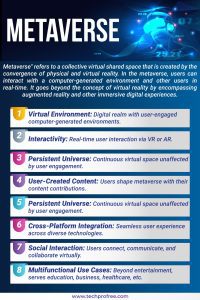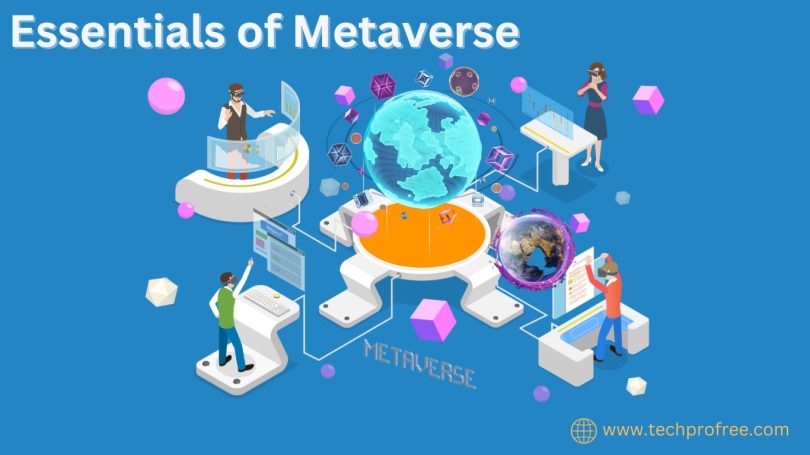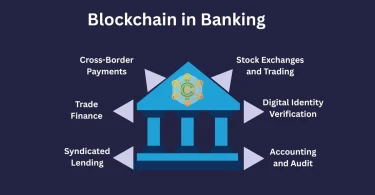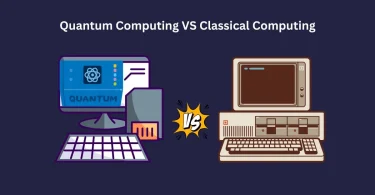Metaverse is a new platform that provides more realistic digital representations of the actual world. Civilization comprises of social interaction, money, trade, economy, and property, and blockchain technology is a major component of it. This article will address the Metaverse holistically, highlighting its key components and noting its importance.
Defining the Metaverse:
As coined by Meta, the metaverse is referred to as the “next generation of social networking and the successor to the mobile Internet,” but we should remember that Meta or any other single organization does not own the entire metaverse. In the present one, the plural term “meta”
By extension, the metaverse represents any 3D virtual space based on virtual reality, augmented reality, artificial intelligence, Internet of Things and blockchain. These devices allow people to share information and on some occasions, they can share with non-human avatars.
Internet vs. Metaverse:
They may be gaining popularity, but the differences between them are still apparent.
Initially, Internet was a linking site and served for information distribution. It might sound like a complicated platform consisting of shopping, entertainment, and communicative functions but is actually a source of information on user’s activities in the real world.
Metaverse is a virtual world where people live their virtual lives, their activities are detached from the real world, and their data is virtual too. The internet that expands the real world is different from metaverse.
For example, uploading of the images of dinner with friends in the metaverse instead of a real social event. In the metaverse, users engage in various everyday activities through avatars, including social interactions, commerce, attending events and more.

Understanding Layers of Metaverse:
Entrepreneur and author Jon Radoff outlines seven distinct layers comprising the Metaverse, each influencing different facets of the user experience:
- Experience: Dematerialization as enabler for a broad spectrum of experiences in physical space.
- Discovery: Assisting exploration via app stores, search engines and user review sites.
- Creator Economy: Providing developers with design tools and apps for creation of digital assets and experiences.
- Spatial Computing: Enhancing 3D interactions leveraging mixed reality, virtual reality and augmented reality.
- Decentralization: Scalable ecosystems and distributed computing in eliminating one rule.
- Human Interfacing: Using hardware layers which take a body of a real person for an avatar.
- Infrastructure: The field spans all the way from device powering technologies through networking connections up to content delivery systems.
Accessing the Metaverse:
Presently, there is no established way of exploring into the metaverse because every platform follows diverse procedures in this case. In most instances, users can commence exploration using their own devices, which include computers or smartphones. Usually, you are asked to register a user account and begin for free. In case of trade or other commercials, it might be essential to have a cryptocurrency wallet.
Key Features of the Metaverse:
The Metaverse operates on a set of fundamental features that define its functionality and user experience…
- Incorporation of Avatars:
They develop virtual personalities that depict how they feel and who they are. There are static and interactive avatars that allow for a digital persona. Users can customize and upgrade their avatars using some gamification elements to create an exciting experience. Some avatars could be exact copies of real life characters while some may simply have to be made up entirely out of imagination.
- Blockchain-Based Operations:
Virtual assets get protected against any possible fraud through blockchain technology, ensuring their digital proof of ownership. The integrity of data is necessary for its validity, thus preserving the property of the content as well as diversity in the Metaverse. Decentralized organization through blockchain prevents drawbacks associated with centralized data storage systems.
- Use of Virtual Land (Parcels):
In the Metaverse, people can purchase virtual land with cryptocurrencies. Land acts as NFTs which are non-fungible tokens, and represent individual blockchain assets. Use case of virtual land depends on its size and location of where it would be used for example, digital storefronts, gaming, and entertainment interactions.
- Immersive Experiences (AR and VR):
However, AR and VR technologies immerse participants in worlds that combine reality and virtual reality. Both AR and VR are critical components upon which metaverse projects base their real-time communications and precise 3D rendering of objects. Increases validity of play, concert, drama or business meetings.
- Intersection with Artificial Intelligence (AI):
Content analysis, speech processing, robotics, computer vision, and posture estimation in Metaverse all depend on AI. Metaverse systems are effectively managed by AIOps, an underdeveloped area of AI. Chatbots powered by AI are equipped with lifelike avatars that take part in diverse processes such as sales, marketing and supporting customers.
- Decentralized Autonomous Organizations (DAOs) for Governance:
A DAO is formed based on an open-source program that enables users across the globe who transact through the use of blockchain and smart contracts to constitute a decentralized governing organization. Decisions are made with consent by making proposals which are voted upon by concerned stakeholders. Treasury Wallet in D.A.O helps in farming on multiple networks and hence allows the decentralized management of assets needed to populate metaverse.
- Human-Computer Interface (HCI) Technology Integration:
Metaverse is dependent on HCI technology for integrating multiple platforms, devices, and people on a massive scale. HCI enables the communication between man and machine where is vital for including users in the virtual field. Allows for involvement in certain activities especially those that group of people with formal instructions on operating on computing systems.
- Emphasis on Social Interactions:
The Metaverse relies on avatars and visual representations for users to communicate and exchange information. Cyberspace serves as a virtual environment in which social interactions take place. Differences between the economic and physical limitations of real-world locations dissolve, merging physical experiences into a limitless virtual world.
- Support for Web3:
Web3 aims to revolutionize the internet by enhancing user ownership and control over online content, digital assets and personas. Web3 aligns seamlessly with Metaverse technologies, providing the foundation for connectivity in the decentralized virtual environment. Promises a new era of online experiences, combining user empowerment and a decentralized web structure.
Conclusion:
The metaverse is the complex thing of the digital world that comprises various strands of virtual worlds, the blockchain and artificial intelligence. The world’s boundaries dissolve as humans engage in the virtual realm via their avatar acting through cyberspace. The above provides an immersive digital space that includes layers such as dematerializing experience and governance of decentralized autonomous organizations. Visiting the Metaverse can be compared with traveling without a plan where you do not know what will await you around the corner. Platforms are calling to the users to have unique experiences starting with creating custom avatars and ending up buying virtual lands. Here, we progress through augmented and virtual reality merging with actuality and fantasy. The metaverse is a symbol of the convergence of technology and human interaction. It is much more than just a platform as it is the world where lines get blurred and there can be no limits. We walk into the future with avatars, virtually step out on the land and welcome to Web 3 time where the users are empowered and have an open platform network that controls the digital world.




Leave a Comment